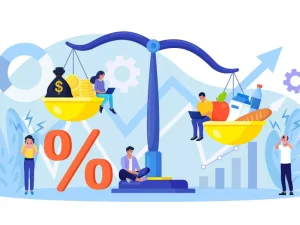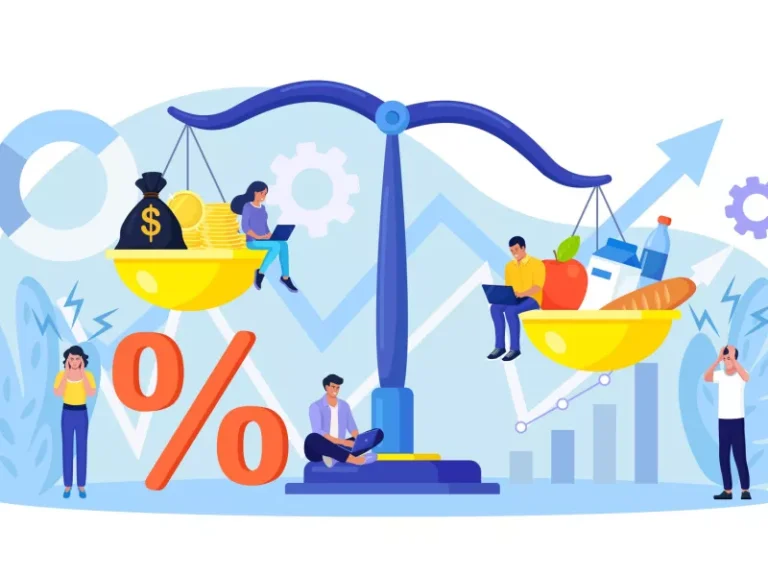Understanding risk-adjusted returns is essential for investors, portfolio managers, and financial writers who want to compare strategies fairly and make better decisions. While classic metrics like the Sharpe Ratio get most of the spotlight, they capture only a slice of the performance picture. This article digs deeper — explaining limitations of traditional measures, introducing alternative and complementary approaches, and giving practical guidance so you can evaluate investments more accurately in real-world conditions.
Why risk-adjusted returns matter
Investors do not care only about raw returns. They care about returns relative to the risk taken to achieve them. The same 10% annual gain means very different things if achieved with 5% volatility versus 30% volatility. Risk-adjusted metrics normalize performance so you can compare strategies with different risk profiles on a common footing.
Key benefits of focusing on risk-adjusted returns
- Fair comparison across assets, strategies, or managers.
- More informed allocation decisions when building diversified portfolios.
- Better fee negotiation when assessing manager skill versus luck.
- Improved risk management by identifying strategies with hidden tail risks.
Traditional metrics: what they are — and what they miss
Sharpe Ratio (brief recap)
Sharpe Ratio = (Portfolio Return − Risk-free Rate) / Standard Deviation of Returns.
Strengths: simple, intuitive, widely used.
Weaknesses:
- Treats upside and downside volatility equally.
- Assumes returns are normally distributed.
- Sensitive to the chosen time window and sampling frequency.
Sortino Ratio
Sortino Ratio replaces total volatility with downside deviation, focusing on negative volatility only. This is an improvement, but still:
- Requires a subjective target (minimum acceptable return).
- May understate tail risk if downside deviation doesn’t capture extreme losses.
Treynor Ratio and Information Ratio
- Treynor Ratio uses beta (market exposure) as the risk denominator — useful for market-relative evaluation but not for absolute-risk strategies.
- Information Ratio measures excess return relative to a benchmark per unit of tracking error — useful for active managers but sensitive to benchmark choice.
The core limitation
Most traditional metrics assume symmetric, stable, and normally distributed return behavior. Real markets are asymmetric, fat-tailed, and time-varying. That means traditional measures can miss skewness, kurtosis, liquidity risk, drawdowns, and hidden concentrations.
Going beyond the basics: alternative and complementary measures
To get a fuller picture, combine traditional ratios with one or more of the following:
Conditional Value at Risk (CVaR) / Expected Shortfall
- What it measures: Average loss in the worst tail (e.g., average loss in the worst 5% of cases).
- Why it matters: CVaR captures extreme downside risk that standard deviation misses. It’s coherent (mathematically sound) and directly aligned with tail protection.
Omega Ratio
- What it measures: Ratio of cumulative gains above a threshold to cumulative losses below that threshold across all return levels.
- Why it matters: Omega uses the entire return distribution, not just moments, and can detect favorable asymmetries.
Calmar and Sterling Ratios
- Calmar Ratio: Annualized return divided by maximum drawdown over a period.
- Sterling Ratio: Similar, but uses average drawdown instead of max.
- Why they matter: Investors care deeply about drawdowns — these ratios tie performance to the pain experienced during losses.
RAROC (Risk-Adjusted Return on Capital)
- What it measures: Return relative to economic capital allocated for potential losses (often used by banks).
- Why it matters: Connects returns to regulatory and capital costs, making it essential for institutions managing constrained capital.
Ulcer Index and Downside Capture Ratios
- Ulcer Index measures the depth and duration of drawdowns.
- Downside Capture compares performance during down markets to a benchmark.
- Why they matter: They quantify manager behavior in stressful markets and help identify strategies that preserve capital.
Skewness and Kurtosis-adjusted Metrics
- Including skewness (asymmetry) and kurtosis (tail fatness) adjustments helps highlight strategies with hidden downside risk or attractive positive skew.
Liquidity-Adjusted Return Metrics
- Incorporate transaction costs, market impact, and the cost/time to unwind positions.
- For illiquid strategies, reported returns may overstate achievable returns — adjust for bid-ask spreads, slippage, and funding constraints.
Practical frameworks to evaluate risk-adjusted performance
To evaluate a strategy holistically, follow a layered approach:
1. Baseline: conventional metrics
- Compute Sharpe, Sortino, Treynor, and Information Ratios for quick screening.
2. Tail-risk and drawdown analytics
- Calculate maximum drawdown, Calmar Ratio, CVaR (e.g., 95% and 99%), and Ulcer Index.
- Look at realized losses in stress periods (2008, 2020, or other relevant historical events).
3. Distribution diagnostics
- Plot return histograms, QQ-plots, and compute skewness & kurtosis.
- Check for serial correlation (autocorrelation) — persistent strategies may have overstated volatility.
4. Liquidity & transaction-cost modeling
- Estimate slippage under realistic execution scenarios.
- Stress-test portfolio liquidation under forced-deleveraging scenarios.
5. Scenario & forward-looking stress tests
- Run scenario analysis: tail shocks, volatility spikes, rate moves, and funding stress.
- Incorporate what-if scenarios to estimate worst-case capital needs.
6. Operational and concentration risk checks
- Assess counterparty exposure, single-name concentrations, and correlated positions not visible in price series.
Implementation: concrete steps for portfolio managers and investors
- Standardize reporting windows and frequencies. Be consistent: compare monthly to monthly, not monthly to daily.
- Use multiple metrics together. No single number tells the whole story — build a dashboard of complementary metrics.
- Adjust for leverage and fees. Report returns gross and net of fees; reflect leverage in risk calculations.
- Incorporate liquidity assumptions into backtests. Backtests without realistic trading costs are optimistic.
- Stress-test capital and margin needs. Ensure the portfolio can survive margin calls and temporary losses.
- Document regime shifts. If a strategy performs differently in rising vs falling rates (or volatility regimes), quantify those differences.
Advanced approaches: blending statistical and machine-learning tools
Modern investors increasingly use advanced methods to capture non-linear and conditional risk dynamics:
- Time-varying volatility models (GARCH, stochastic volatility) that reflect changing risk over time.
- Regime-switching models to identify different market regimes (calm vs crisis) and compute regime-specific risk-adjusted returns.
- Machine learning for pattern recognition: using feature-engineered inputs to predict downside risk or drawdown probability.
- Bootstrapping and Monte Carlo simulation to assess a broader set of possible outcomes beyond historical observations.
These tools help estimate conditional risk — what the risk will be tomorrow given current signals — which is crucial for dynamic allocation.
Case study (conceptual, illustrative)
Imagine two strategies, A and B, each averaging 10% annual return over 5 years.
- Strategy A: Volatility 8%, max drawdown 10%, positive skew, rapid recovery from dips.
- Strategy B: Volatility 12%, max drawdown 35%, negative skew, slow recoveries.
Traditional Sharpe might favor A (higher return per unit deviation), but the decisive difference is drawdown behavior and tail risk. CVaR and Calmar Ratio would penalize B heavily; liquidity-adjusted metrics might further reduce B’s practical returns if unwind costs are high. The practical takeaway: two strategies with identical average returns can be very different investments when adjusted for real-world risks.
Common pitfalls and how to avoid them
- Over-reliance on a single metric. Always triangulate using several measures.
- Ignoring non-normality. Use tail measures like CVaR; examine skewness and kurtosis.
- Cherry-picking time periods. Use multiple windows and out-of-sample testing to avoid look-ahead bias.
- Neglecting liquidity and operational risk. Those often cause real losses during stress, despite “good” backtested metrics.
- Mis-specified benchmarks. Choose realistic benchmarks that reflect the strategy’s investable universe.
Building an actionable risk-adjusted reporting framework
- Dashboard essentials: Sharpe, Sortino, CVaR (95/99), max drawdown, Calmar Ratio, liquidity-adjusted net returns, and scenario P&L.
- Frequency: Monthly for high-level trend; weekly/daily for active strategies and risk-monitoring.
- Transparency: Disclose assumptions on slippage, funding, and leverage.
- Governance: Periodic model review, independent validation, and pre-defined escalation triggers for breaches.
Conclusion: measure widely, think critically, act prudently
Risk-adjusted return analysis is not a math exercise — it’s a decision-making tool. Moving beyond traditional metrics means acknowledging asymmetric risks, liquidity realities, regime dependence, and operational constraints. By combining classic ratios with tail metrics, drawdown-focused measures, liquidity adjustments, and forward-looking stress tests, investors can make far more informed choices and avoid unpleasant surprises.
FAQ
1. How do I choose which risk-adjusted metric to prioritize?
Prioritize metrics that address your main concern: capital preservation (use Calmar, max drawdown, Ulcer Index), tail risk (use CVaR), or benchmark-relative performance (use Information Ratio). Use a combination rather than a single metric.
2. Can risk-adjusted returns be compared across asset classes?
Yes — but be careful. Adjust for liquidity, trading costs, and investability. For example, private equity’s reported returns require larger liquidity and fee adjustments compared to public equities.
3. How should fees and taxes be incorporated into risk-adjusted returns?
Report both gross and net figures. Subtract management and performance fees, and where relevant, estimate tax drag to reflect realistic investor outcomes.
4. Is backtesting enough to trust a strategy’s risk-adjusted metrics?
No. Backtests are valuable but limited by historical regimes and survivorship bias. Complement backtests with stress tests, scenario analysis, and out-of-sample validation.
5. How often should I recalculate risk-adjusted metrics?
For long-term investors, monthly recalculations are often sufficient. For active strategies, recalculate weekly or daily and monitor key risk triggers in real time.
6. Do machine-learning models produce reliable risk-adjusted predictions?
They can improve conditional risk estimates, but they also carry overfitting and interpretability risks. Use them with robust validation, feature stability checks, and human oversight.
7. What’s the single best improvement I can make to my current evaluation process?
Start including a tail-risk measure (like CVaR) and a drawdown-based metric (like Calmar) alongside Sharpe or Sortino. That combination immediately reveals hidden vulnerabilities that average-return metrics miss.


















